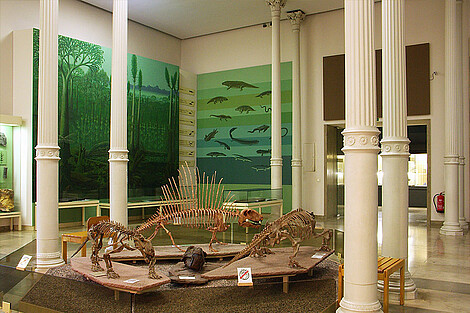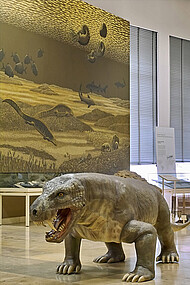Life in prehistoric times
This exhibition shows the development of life on earth over the past 540 million years – from the Palaeozoic era to the Mesozoic era to the last ice age over 10,000 years ago.
Fossils are petrified evidence of how life developed in the water and on land. Our exhibition presents early forms of life dating back to the Cambrian period (between 540 and 490 million years ago). Within a very short period of time(in geological terms), life on earth during the Cambrian featured a broad palette of unusual and interesting animals, none of which exist any more. We display fossils from the coal forests of the Carboniferous period (between 360 and 300 million years ago), and they show one thing very clearly: during this time period, Germany was a subtropic region and was home to especially large arthropods and amphibians. The life-sized model of the 2 m millipede Arthropleura is a striking example.
Fossils from the Messel pit, a World Heritage site, confirm that several animal species have not undergone any significant change for over 50 million years. The giant skeleton of a whale from the Neogene period impressively demonstrates where palaeontologists often find marine fossils – in the desert.










